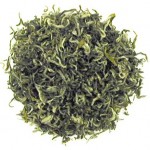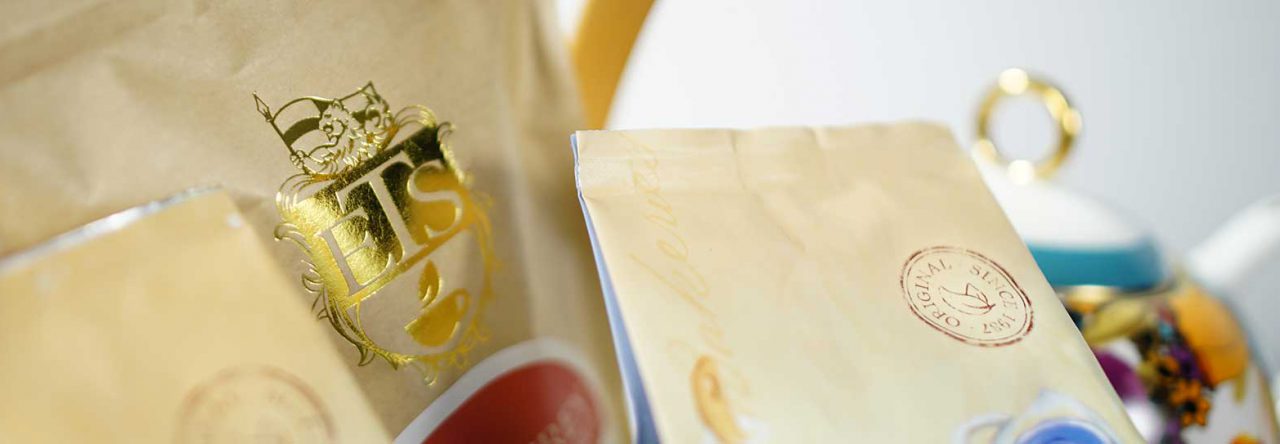
Growing in popularity, white teas have an array of flavors that appeal to both tea newbies and to those of us who live the “tea life.” They can expand your taste horizons into the realm of the delicate and exotic.
Producing white tea is not the same as producing green tea. In fact, by comparison, green tea production is simple: start with leaves from the Camellia Sinensis bush or one of its varietals, dry them (pan fry, steam, oven bake, etc.) to stop oxidation from turning them black, and then process for consumers. (I’m oversimplifying here, but you get the basic idea.)
For white tea, start with the Narcissus bush (also called chaicha), a tea varietal. Pick only the special end leaves and bud, ideally where a leaf or even two is wrapped around the newly developing shoot, that are showing a light green to almost gray white color, preferably covered with a peach-fuzzy down. Separate the shoots from the leaves. Next comes the drying and withering. No steaming or pan-firing here. It’s up to Old Sol (the Sun) or baking at low temperatures (below 104˚ F/40˚ C). Finally, workers manually select the best leaves and shoots, all for your drinking pleasure.
People trying white tea for the first time expect the liquid to be very pale in color and taste. That’s where the surprise often kicks in. The “white” doesn’t refer to the color of the liquid, but to the look of the tea leaves, which are almost gray due to their fuzzy, downy appearance. As for the liquid, one white tea I tried recently steeped up orange in the pot and had a hay-like flavor. Another was a brownish yellow and had a mild, slightly buttery taste.
Some white teas that will get you started:

100 Monkeys — No monkeys here, just premium grade, loose leaf white tea from China.
Adams Peak — A rare silver tip white tea grown at 7800-8200 feet above sea level in the Nuwara Eliya region of Sri Lanka (Ceylon) and hand rolled, producing a tea liquid with a delicate, light copper color and a taste of pine and honey.
Oasis Mango — Another fruity white tea made with tropical mango, making it both sweet and fruity and the perfect pick me up.
Pai Mu Tan — Made of leaves plucked from the tea varietal Narcissus (chaicha) bush, using only the “two leaves and a bud” ones that are fuzzy and pale in color. The flavor is delicate and should not have milk added. You may want to sweeten to your taste. This is the highest grade of white tea available before you get to such pricey teas as Peony White Needle.
Peach Apricot — A blend of peach and apricot for natural sweetness to enhance the delicate tea flavor.
Peony White Needle — Okay, now you’re in the pricing stratosphere with this white tea from the Chongqing Province of China. Having no grassiness or astringency, this tea’s sweetly mellow flavor and aroma will linger in your mouth and memory. We’re talking top grade here, as well as rarity, making it the most expensive. There are tight restrictions on when the two leaves and a bud on a stem can be plucked: certain dates and weather conditions, and only the most perfect leaves and buds. Truly a tea lover’s delight, to be treasured and savored in a quiet tea moment. Share a potful with your favorite “someone.”

Snow Dragon — My review of this tea revealed a smoky, planty tasting pale yellow liquid. The tea leaves can undergo multiple infusions. Try some with a plate of chocolate-covered McVitie’s Digestives. We did. Yum!
Tangiers Lemon Flavored — Popular in Tangiers, where lemon juice is squeezed over anything from meats and bread to tea.
White Eagle Long Life — My review of this tea showed it to be flavorful yet delicate with a pale yellow liquid, a full feeling in mouth (sort of buttery), with a hint of dried alfalfa and a peachy/apricotty taste.
These will get you started. There are also white teas by Golden Moon, Harney & Sons, Revolution, and others. Personally, I would avoid the ones with fruit flavors, since you won’t taste the tea, but that’s me. The exception would be the Tangiers Lemon Flavored White Tea, which would be a great chilled tea.
No need to decide now. Get a sampler pack with several different white teas in it, then try each one, make notes of how you liked them, and then order more of the ones you find more appealing. Happy tasting!
Don’t forget to check out A.C.’s blog, Tea Time with A.C. Cargill!



Leave a comment